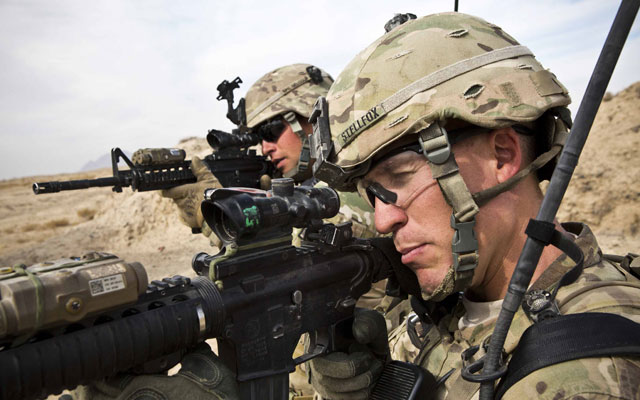As the U.S. Army prepares for future contingencies around the world, it continues to find its readiness at the mercy of “time and money,” Army chief of staff General Ray Odierno said last week at an AUSA conference.
Budgetary pressures have forced the Army and the other armed services to cut back on various training exercises, causing the number of available combat-ready units to atrophy, Odierno argued. The Army announced last June that it would reorganize 45 brigade combat teams (BCTs) into 32, but further cuts to defense could bring that number down even further. “Right now, we have in the Army two brigades that are trained. That’s it. Two,” Odierno said last Monday.
The Daily Signal depends on the support of readers like you. Donate now
These reductions come at a time when America’s responsibilities throughout the world are growing. Thousands of soldiers are already stationed in the U.S. Pacific Command’s area of operations to help in the Asia–Pacific region.
Meanwhile, the 48th Infantry BCT of the Georgia National Guard is preparing to be deployed to U.S. Southern Command, where narcotics trafficking in Latin America have begun flowing into Caribbean nations.
The Army plans to have seven BCTs trained and ready to go by June of next year, but budget uncertainty is making that a difficult task as well.
The Army has already cancelled Combat Training Center (CTC) rotations for several BCTs scheduled to deploy to Afghanistan. CTC rotations are critical for generating capable units and developing agile leaders to operate more effectively in complex environments.
“Because of what happened last year, we weren’t able to invest in readiness—we had the shutdown, we’re now in a CR, if we go to another CR plus sequester, which is what we’re planning for, I’m going to significantly reduce our ability to train this year,” Odierno said.
“The worst-case scenario,” Odierno warned, was to “deploy thousands of soldiers somewhere and we have not properly trained them to go because we don’t have the money.”
Members of Congress can mitigate the negative symptoms of defense cuts, retired Army Colonel Richard J. Dunn III argues, by maintaining the three-legged stool of readiness—personal, equipment, and training—because imbalances in any of the legs can “weaken readiness as much or more than the reduction in overall defense spending cuts.”
Achieving a balanced budget while sustaining military readiness is a feasible task, Heritage budget expert Patrick Louis Knudsen explains, and can be accomplished by terminating certain antiquated government programs and reforming others, such as the Departments of Energy, Agriculture, and Transportation.
We rely on our service members every day to protect and defend American interests, liberty, and allies. We cannot allow budget cuts to put them in a weakened or harmful position. This requires vision and wherewithal to anticipate readiness challenges and deal with them head on before the next crisis occurs.
Clark Irvine is currently a member of the Young Leaders Program at The Heritage Foundation. For more information on interning at Heritage, please click here.































